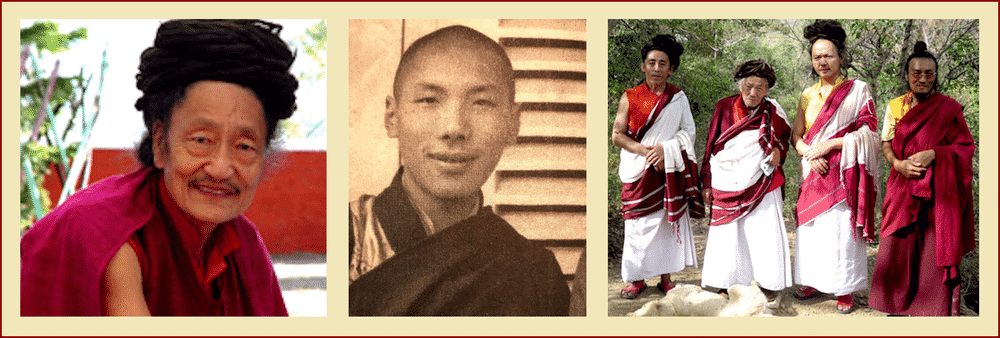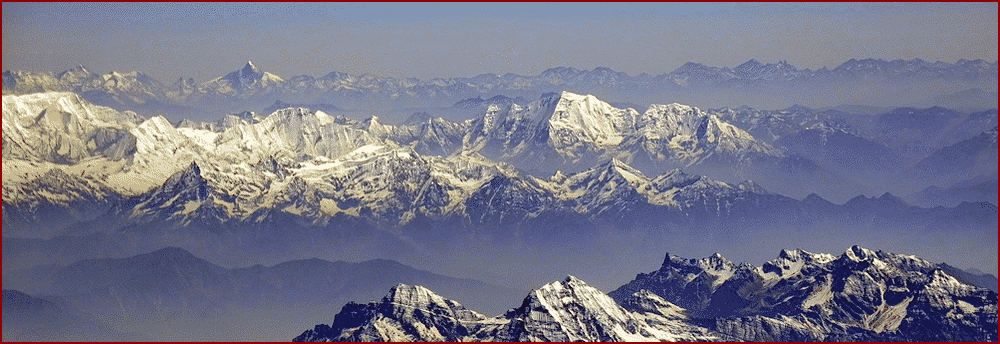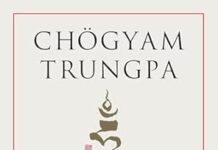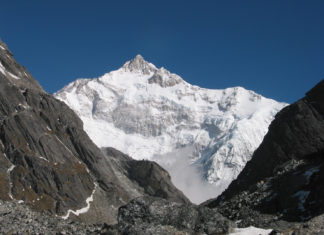This two-part essay is based on Tashi Colman’s interviews with Togden Achö in the summer of 2018, in Bir, India. In it the Togden describes his earliest memories of Trungpa Rinpoche and then his experiences of the escape, some of which add important, often dramatic, details to what we knew — details which further highlight the journey’s extraordinary dangers.
Special thanks to Tashi Colman for conducting the interview, and Rigzin Wangmo for translation.
Achö was born in 1932 to parents who were students of Trungpa Rinpoche. Among his early memories was the sound of weeping filling the family home; he was told that the family was mourning the death of the Tenth Trungpa, Chökyi Nyinche. He recalled later making the three-hour ride to Dutsi Til to view the body. He was seven at the time.
Achö later pursued his spiritual studies at Khampagar, the seat of the Khamtrul lineage. Sometime in 1957/8 he met Trungpa Rinpoche for the first time. He recalled that Rinpoche had recently completed his education, and that they talked about a variety of subjects, chiefly the Chinese presence and the possible need to escape. He remembered how Khamtrul Rinpoche and Trungpa Rinpoche headed up the mountain for a picnic; he heard later that Khamtrul had tried to persuade Trungpa Rinpoche to leave Tibet with him, but that Rinpoche was unable to do so, committed as he was to presenting the Rindzin Terdzö at Yag Monastery.
In the spring of 1959 Achö was in retreat when he was brought the news that Lhasa had fallen to Communist Chinese forces. It was clear that he must leave retreat and make his escape. Aged 27, he left Khampagar together with a few other monks, their small group led by the monastery’s umdze.

Likely sometime in May – very late under the circumstances to be still attempting an escape — they set out westwards towards Lhasa, apparently aiming to link up with the traditional routes to India. Like Trungpa Rinpoche before them, they found that the road to Lhasa was blocked. Then, after turning south and heading down the Alado valley towards the Nyewo River, they heard that Rinpoche and his party were camped on the high plateau above. Achö felt that it was an excellent location, as it was high and relatively safe from Communist forces.
As yogis without wealth, possessions or supplies, the Khampagar group survived by begging in the Nyewo valley. They were as confused as everyone else by the quickly changing circumstances and, with no idea of what to do or where to go, Achö climbed the 9,000 ft. to the plateau to request Trungpa Rinpoche’s guidance. After Rinpoche performed a mirror divination, Achö and his group decided to join Rinpoche’s party.
Togden Achö vividly recalled, from an early stage of the journey, the rope that had been strung across the flooding river near Rigong Kha that Rinpoche described in Born in Tibet. He also remembered that after Rinpoche’s group had crossed the river the rope was cut behind them to prevent pursuit and conceal their movements — a fresh detail which adds to our sense of the imminent danger the party faced at the time. Adding another detail to Rinpoche’s account, he noted that the guide Tsepa, whom Rinpoche was relying on to get them to the Brahmaputra, was a young man of 24.
During the journey Achö did not attend the morning lamas’ meetings, but the Khampagar umdze did so and reported back. Each morning Rinpoche presented his mirror divination reading for the day; every day he emphasized the vital importance of maintaining discipline — of keeping together, staying as quiet as possible, keeping concealed from locals, not lighting fires, and so on.
Achö said little of his experiences during the escape itself — in the limited interview time available they were not of primary interest to us — but he did describe an avalanche that carried a few people down the mountain; somehow they managed to surf, staying on top and ahead of the snowy surface, and no harm was done. The avalanche probably occurred several days after they left the Tsophu valley, as they ascended the steep, snowy slopes up to the pass from the Tong-gyug valley to the highlands. Rinpoche does not mention it in Born in Tibet, maybe because it happened out of sight behind the leaders’ group and, with no injuries or deaths to be reported, he was never told of it.
As with the other survivors we’ve interviewed, Achö’s most riveting memories were of the crossing of the Brahmaputra. He described the coracles setting out from the north bank, and clearly recalled who was in the lead vessel: Trungpa Rinpoche, Akong Rinpoche and Yag Rinpoche together with three attendants, and the boatman/paddler, Urgyan Tendzin (who had become Rinpoche’s right hand man). Achö said that between 70 and 80 people ultimately made it across to the south bank, confirming our own final estimates.
As we know from Born in Tibet and survivors’ accounts, shortly after the first coracles reached the sand bar intense Communist gunfire broke out. We did not know that shortly after the firing began, according to Achö, PLA forces had entirely surrounded the refugees gathered on the northern shore trying to board the coracles. As he told this part of the story, Tashi noted, the togden raised his arms in machine gun pose to indicate there was firing going on all around them. The communist forces were slowly advancing on the refugees from all sides, corralling them in, pinning them against the river.
By this point Urgyan Tendzin, who had returned to pick up more refugees after disembarking his precious cargo on the sand strip, was back on the north bank and had linked up with the Khampagar group. Seeing that they would soon be captured by the encircling troops, it appears that he, Achö and a few others made a desperately brave decision — to run directly at the muzzle flashes, towards the point of greatest danger. They apparently achieved this without casualties, dashing past the surprised attackers and into the night.
After hiding for a few days, Achö was able to steal a boat and, presumably with a few Khampagar companions, eventually made it across the river to the south bank, following Rinpoche and the others over the Himalayas to India. As we know from Born in Tibet, Urgyan Tendzin remained on the north bank, and later followed the river as it looped around Namcha Barwa and then trekked south to India.
On a sobering note, after the interview the Togden said privately to a friend that what he and his group had gone through on the escape was “much, much worse” than anything he’d told us. When he related a few incidents to her later, the friend said that she had recoiled at their hardships.
Read Togden Achö’s Recollections: Part Two
















